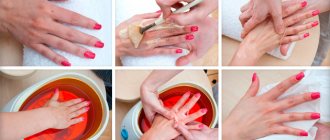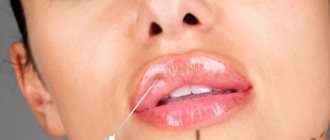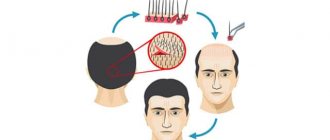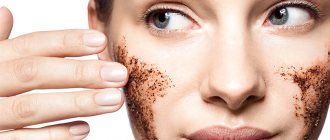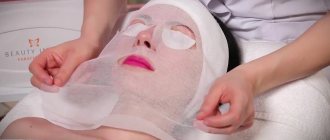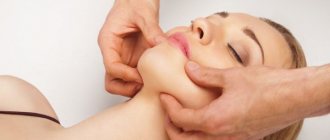Cosmetic procedures can be not only useful, but also enjoyable. Thus, a paraffin face mask has been successfully used for a long time to eliminate cosmetic defects in appearance and general improvement of the skin. To carry out such an effect, no special skills are required, it is safe and does not harm human health, which is why it is so easy to implement without the help of a specialist at home. However, it is necessary to take into account certain nuances, which we will talk about.
Indications and expected results
In what cases is paraffin therapy for the face indicated? First of all, it should be noted that this procedure is universal; it provides additional nutrition, hydration and softening of the skin. Paraffin masks are suitable for absolutely any skin type, especially dry and aging skin. In addition, they are carried out for the purpose of:
- Eliminate swelling.
- Reducing ptosis, tightening sagging skin.
- Slowing down age-related changes.
- Reducing expression lines, deep folds and creases.
- Reducing scars.
As a result of paraffin therapy, acne formations decrease or disappear, muscle tone increases, pores expand and sebaceous plugs come to the surface, skin elasticity increases, and the facial contour becomes clearer.
Mechanism of action and indications for the procedure
The mechanism of action of paraffin therapy is due to the use of cosmetic paraffin, which has a high heat capacity and low thermal conductivity (it gives off heat very slowly). When paraffin heated to a liquid state is applied to the skin, it has two types of effects:
- thermal - promotes heating of the epidermis and dermis by 1-3 degrees (increasing the temperature of the skin promotes the expansion of capillaries and increases blood flow, which leads to an acceleration of metabolism in cells, and steams the skin, as a result of which its pores open, cleansed of impurities and sebaceous secretions glands);
- compression - when cooling, paraffin decreases in volume by 10-12%, forms a hard film on the surface of the skin, which puts pressure on the underlying tissue, which helps to increase the turgor and elasticity of the skin fibers (provides a lifting effect).
Indications:
- dry, dehydrated skin;
- intense peeling of the epidermis (the problem is especially relevant in the winter season);
- decreased skin tone and elasticity, changes in facial contours;
- wrinkles;
- swelling of the face;
- prevention of premature skin aging.
Video: “What is paraffin therapy for the face?”
“Paraffin therapy is an incredibly pleasant and useful procedure. After treatment, the skin becomes soft, turgor increases noticeably (but the lifting effect becomes noticeable only after 3-4 sessions), and wrinkles are smoothed out. There are no unpleasant sensations at the time of the procedure, only warmth is felt, so during the procedure I rest.”
Operating principle
The positive changes mentioned above are achieved due to the complex effect of paraffin on the skin of the face. It is expressed:
- The saturation of soft tissues with nutrients and vitamins contained in the mass itself (or added to it).
- In optimizing local processes (blood circulation, lymph flow, metabolism) due to the generated heat from the hot composition.
- In the redistribution of fluid and the removal of toxins from soft tissues by creating a greenhouse effect (paraffin stimulates increased sweating, but does not allow the liquid that comes to the surface to evaporate, it is reabsorbed, and toxins remain on the skin).
Cosmetic paraffin
For the procedure, they do not use ordinary paraffin.
Cosmetic paraffin should not be confused with ordinary paraffin. The procedure uses a product of the highest quality, which does not contain any dyes. On the contrary, it is often additionally enriched with various components beneficial to the skin (active substances, vitamins).
Often found, for example, honey or fruit paraffin, as well as with various oils and aloe juice. It all depends on what main functions are assigned to it (softening, moisturizing, nutrition, anti-inflammatory, etc.).
Types of paraffin
For cosmetic purposes, it is customary to use special, purified paraffin. It comes in two types:
- Hot (sold in solid form, requires pre-heating to a temperature of 53-55 degrees, with such initial data it becomes viscous and viscous).
- Cold (sold in creamy form, applied to the skin without prior preparation).
Hot paraffin
Cold paraffin
A special device is used to heat hot paraffin. If you don’t want to spend money on purchasing it, use a regular saucepan with boiling water and a ladle to organize a water bath. Apply paraffin heated in this way to the skin with great care to avoid facial burns.
Paraffin bath
Homemade paraffin bath
Paraffin can be classified not only by consistency and temperature, but also by its composition. Ready-made paraffin used for therapeutic baths and masks does not contain harmful impurities or dyes, and is enriched with plant extracts, vitamins and microelements.
If you purchase regular white cosmetic paraffin, then after heating you can add additional components to its composition. Most often, liquid vitamins, essential oils, natural vegetable oils, and even some food products (for example, cocoa powder or natural honey) are used for these purposes.
What is paraffin and how does it work?
Paraffin is a yellowish, waxy substance that is extracted from petroleum. For cosmetic procedures, a purified white mixture is used, which contains no impurities. But for home use, paraffin is produced with flavors, dyes, plant extracts, algae and other additives. You can purchase such a product at a pharmacy or specialty store.
Paraffin has the following properties: • heat retention; • uniform heating of the skin; • mechanical reduction upon warming up.
How does paraffin work? First, the substance is melted in a water bath, then applied to the skin and left for up to 30 minutes. Meanwhile, paraffin evenly warms the dermis. This leads to the fact that the horny ball softens, the pores open, and sweating, blood microcirculation and lymph flow begin to work more actively.
Hot paraffin removes toxins from cells, promoting better absorption of nutrients and pure moisture.
During paraffin therapy, a person does not experience discomfort and does not receive burns. This feature is associated with the physical properties of the substance. After the procedure, keratinized particles come off along with the formed film, and dry skin becomes noticeably moisturized and soft. After all, she received all the missing vitamins and moisture. And after several such sessions, you can get rid of even small wrinkles and cracks.
Algorithm for the procedure
Paraffin masks for facial skin care can be applied in several ways. The most commonly practiced methods are:
- Applying paraffin in one layer over a moisturizer or collagen-containing composition to enhance their absorption.
- Applying paraffin to previously cleansed skin in several layers. Each subsequent one is applied after the previous one has hardened.
- Applying paraffin using a gauze bandage. The first layer of the composition is applied to clean skin, then fixed with a gauze bandage; in the future, it will be necessary to apply paraffin on top of it another 5-6 times, but without the use of additional materials.
Regardless of the paraffin mask method chosen, you must first treat your facial skin with a scrub to cleanse it of surface impurities and dead cells.
The average duration of paraffin exposure is 20 minutes, after which the film from the hot or unabsorbed remnants of the cold paraffin should be removed, the face should be washed and an additional moisturizer should be used to consolidate the positive results.
Masks should be done no more than 2 times a week, with a break of 2 to 4 days. The full course is approximately 15-20 procedures; if necessary, paraffin therapy can be performed once to solve specific problems (for example, eliminating peeling or the effect of chapped skin).
How is the procedure done?
In order to achieve the most pronounced and stable effect, the paraffin therapy procedure is recommended to be carried out daily or every other day, the course consists of 12-20 sessions. The result becomes noticeable immediately, but increases over time. Maintenance therapy, aimed at preventing skin aging and preventing dehydration, consists of 1-2 sessions per month.
Stages of the procedure:
- cleansing the skin of impurities;
- applying nourishing creams or serums to the facial skin, which, under the influence of paraffin, penetrate into the deeper layers of the skin;
- formation of a paraffin mask - using a brush, 2-3 layers of heated paraffin are applied to the skin (the heating temperature is determined by the master on the inside of his own wrist, which minimizes the risk of burns on the client’s face; the eye area must be protected with cotton pads), after which it is applied on top a special gauze mask for paraffin therapy, and a few more words of paraffin are applied to it (until the thickness of the mask is approximately 1 cm);
- removing the paraffin mask (the paraffin mask can be removed only after it has completely cooled, after 20-30 minutes);
- applying moisturizer according to skin type.
Paraffin therapy for the hands is carried out in almost the same way as for the face, only in beauty salons the paraffin is usually heated in special baths in which its optimal temperature is maintained. The patient dips his hands into the bath several times, after which cellophane gloves are put on his hands and covered with a terry towel. The duration of exposure is 20-30 minutes. Reviews say that the mechanism of action and effects of paraffin therapy for the face and hands are the same, the difference is only in the method of carrying out the procedures.
Contraindications
The use of paraffin for facial skin care has many contraindications. As a rule, cosmetologists do not recommend such a procedure to their patients in the following cases:
- Ulcers and inflammatory processes on the skin.
- Vascular diseases.
- Hypertrichosis.
- Moles, warts and other benign formations.
- Blood clotting disorder.
The list of possible restrictions is still much wider. Paraffin therapy should also not be carried out during pregnancy, with high blood pressure, ischemia, liver cirrhosis, or diabetes. In addition, the most important contraindication is individual intolerance to the components of the composition used.
Indications for facial paraffin therapy
The procedure will perfectly help those people whose skin is dehydrated, excessively dry, and feels tight.
Paraffin therapy also works well with redness and peeling, and will be useful for mature, aging facial skin.
The procedure is truly very popular during the cold period, when due to wind and frost, the skin of the face often becomes chapped and roughened. Lack of vitamins also affects. However, dryness and dehydration can be a problem at any time of the year, so paraffin therapy is always relevant.
Advantages and disadvantages
Paraffin face masks have become increasingly popular recently. This trend is explained by the significant number of advantages that this simple but effective procedure has. Among her strengths are:
- No side effects (paraffin has low thermal conductivity, that is, it transfers heat poorly and causes almost no burns; the skin under such a mask heats up by only 2-3 degrees).
- Pleasant sensations during the procedure, no discomfort, burning or pain.
- The possibility of obtaining not only a cosmetic, but also a psychotherapeutic effect due to the pleasant smell of paraffin and thermal effects.
- Affordable cost of the procedure.
- Possibility of carrying out manipulations both in the salon and at home, ease of implementation of masks.
Set for paraffin therapy at home
With all the advantages of the procedure, it should be remembered that paraffin masks do not provide a pronounced and prolonged positive effect and are not suitable for combating serious defects in appearance. In addition, they also have a fairly extensive list of contraindications.
Paraffin therapy in cosmetology
Paraffin therapy was once widely used by cosmetologists. However, nowadays, with the introduction of high technologies into aesthetic medicine, the popularity of this procedure is declining. The use of paraffin baths for cosmetic procedures has sharply decreased, since a century ago the popularity of paraffin therapy could be compared with the relevance of lasers in cosmetology and medicine in our time!
Paraffin therapy: accessible, cheap and effective! 12607
However, even today paraffin can (and should) be used for home treatments for body skin care: it is accessible, cheap, safe, and - with enough practice - easy and convenient!
History of paraffin therapy: from medicine to cosmetology
The origins of paraffin therapy go back to the beginning of the First World War, when the French physician Edmond Barthe de Sandfort developed a method of treating burn wounds, which he called “keritherapy.” Edmond Bart de Sandefort created a patented paraffin-based mixture, which he called “ambrine” (from the word “amber”). Its exact composition is unknown, but it is believed that it included solid paraffin and amber resin oil. This mixture melted, enveloped the damaged areas and “sealed” the surface of the skin, preventing the formation of ugly scars: clean wounds healed normally by surface tension. Considering that the composition of the “ambrine” composition was kept secret, other burn surgeons worked with their own formulas, the most famous of which was called “Paraffin No. 7” - it consisted of hard paraffin (67%), soft paraffin (25%), olive oil (5%), eucalyptus oil (2%) and resorcinol (1%).
Treatment of burn wounds with ambrine (1919) 12549
In addition to being used to treat burn wounds, paraffin has proven useful for rheumatism, joint pain, and a variety of skin infections. Even today, physiotherapists use the heat stored in paraffin to reduce the symptoms of rheumatism and arthritis, and to make body tissues more flexible before massaging or stretching them in various therapeutic manipulations.
Incredibly, boiling paraffin poured onto any part of the body did not cause burns. Paraffin therapy became increasingly popular - its various techniques were published in magazines, and more and more doctors mastered paraffin therapy techniques. Paraffin was applied to the entire body or isolated areas, and even bathing in molten paraffin was practiced: when it cooled, the patient looked like a statue. Afterwards, the patient was carefully covered with a blanket and left in the bath for as long as the doctor considered necessary. Although paraffin baths were a brand and an expensive procedure compared to regular hot water baths, they quickly became common practice among physical therapists as they were highly effective.
Paraffin therapy for weight loss
As soon as paraffin baths were adopted by physiotherapists, cosmetologists and estheticians immediately seized on the idea of using them: paraffin therapy gave a noticeable and not at all undesirable side effect - softening the skin. Also, paraffin baths reduced swelling by increasing sweating and simultaneously improved blood circulation. And so cosmetologists of the 1930s seized on the last effect.
Paraffin therapy for weight loss (1936) 12718
Using heat to stimulate sweating is a hack that has long been used to help you lose weight, mainly through hydration. Although the effectiveness of such procedures is questionable - dehydration is harmful, and the weight loss effect did not last long - paraffin therapy has been used for a long time as a method of losing weight.
Paraffin bath at Elizabeth Arden (1938)
12469
Many beauty salons from the 1930s until the 1950s “wrapped” their clients in paraffin as part of a weight loss program. For example, clients of the Elizabeth Arden salon lost several pounds or even kilograms in this way, however, they were first treated with rollers to eliminate “undesirable layers”, and then covered with paraffin in a special “Ardena Wax Bath” and, at the end of the procedure, intensively massaged to remove fat as much as possible. sediments. When using paraffin therapy for weight loss or skin softening, it became clear that the results of such treatment were quite limited and short-lived. Therefore, most salons today work only primarily with services such as paraffin hand baths as part of creating the perfect manicure. But don’t discount this method – it has many advantages.
Paraffin therapy: cosmetic benefits
Plasticizing mask from Helena Rubinstein (1949) 12534
The advantages of paraffin therapy are based on the fact that paraffin is an excellent conductor of heat. Moreover, if you immerse your hand in a bath of hot water and the other in paraffin, the risk of burning the first will be much higher. In addition to the fact that paraffin wax does not burn the skin and makes you feel more comfortable, the layer of wax also acts as a blanket, distributing heat evenly over the surface of the skin where the application is applied. In addition to this, using paraffin instead of water also helps prevent the skin from wrinkling, which is inevitable after immersion in water for a long period. After paraffin therapy, the skin is in much better condition, and it is also prepared for any subsequent cosmetic manipulations - masks, massage. Paraffin can be used on any area of the body that you feel is "unsightly", particularly to remove blemishes and swelling on the ankles. Paraffin applications are also an excellent method that will soften the skin and even out its tone. Since the induced heat cannot escape from under the thick film, under its influence the upper layers of the epidermis - in particular the stratum corneum - noticeably “thicken”, so the surface of the skin appears more uniform. At one time, estheticians even used a special type of cosmetic procedure - paraffin facial masks, which solved the problems of dry and wrinkled skin.
Paraffin therapy in the salon 12690
Home paraffin therapy
Baths in which solid paraffin is melted are mainly used for manicure and pedicure procedures, to soften rough skin of the hands or feet, and for treating nails and cuticles. However, as mentioned above, paraffin can be applied to any part of the body. Paraffin therapy is always carried out according to the same scheme.
Home paraffin therapy 12615
Paraffin therapy at home: stages
The first stage in paraffin therapy is thorough cleansing of the skin. Before applying the application, it is advisable to conduct a short stimulating massage with a nourishing cream. Oily cream can be removed with a special lotion, but you can also leave it on the skin: while you rest, a warm layer of paraffin will make its ingredients work on the skin. Apply paraffin and wrap it with film or a towel. After maintaining the application period, you need to remove the paraffin (it's easy) and wipe the skin with tonic. Next, apply a moisturizing and nourishing cream or mask (depending on the condition of the skin) and perform a light massage.
When conducting home paraffin therapy, it is worth considering important points.
- Paraffin is applied to the skin in two main directions - for this it is better to use a brush rather than your hands, or pour a stream of paraffin from a jug or ladle.
- Paraffin is usually left on the skin for 10 to 30 minutes. During this time, you need to wrap the application site so that the paraffin retains heat.
- The process of peeling paraffin from the skin is made easier if you first add a little mineral oil to it - once it hardens, the material will become more plastic.
- Home paraffin treatments will take quite a lot of time, so it is better to devote a whole day off for such care, combining it with detox.
Paraffin therapy: educational videos 11635
What happens after paraffin application
Of course, we are wondering what is happening under the paraffin mask and why the skin after the procedure is moisturized, smooth and soft.
The thing is that after contact with the face, cosmetic paraffin gives off some of its heat, due to which the areas of the skin under it warm up by 1–2 °C. As a result, a kind of sauna effect is created, skin pores begin to open, and sweating increases. However, the water leaving the pores encounters an obstacle from the paraffin “blockade”, which is why the skin has no choice but to absorb it back.
Now as for the paraffin itself: the medicinal product, as noted above, does not contain any dyes, but, on the contrary, includes various beneficial substances, vitamins, and oils. These substances penetrate better into steamed skin.
As a result of the procedure, under the influence of heat, the top layer of the skin softens well, local blood circulation increases, which leads to tissue restoration and the release of toxins.
Why don’t toxin molecules, like water, sink back into the skin? Yes, because the sizes of their molecules are much larger than water. Therefore, they can get out, but it’s difficult to get back in.
Paraffin therapy: contraindications
The procedure is not performed if:
- acne;
- noticeable rosacea;
- redness of the face;
- high blood pressure;
- skin inflammations;
- excessive growth of facial hair (hypertrichosis);
- multiple moles and warts;
- oncological diseases;
- herpes;
- pregnancy.
If you have moles, warts, papillomas and other growths on your face, you can consult a doctor to have them examined to see if they are benign. If it is confirmed, these elements can be deleted. For example, today the method of laser removal of nevi is very popular, as it is quick and painless.
To get rid of other problems that are contraindications for paraffin therapy, read: “Types of acne (acne) and methods of their treatment”, “Laser treatment of rosacea”.
